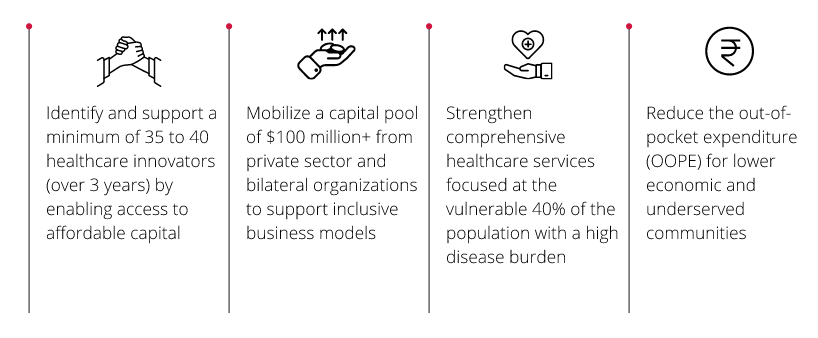Social Justice
SAMRIDH Initiative
- 10 Feb 2022
- 5 min read
For Prelims: SAMRIDH Initiative, Atal Innovation Mission (AIM), NITI Aayog, Covid-19.
For Mains: Significance of SAMRIDH initiative in improving Healthcare Landscape.
Why in News?
Atal Innovation Mission (AIM), NITI Aayog, and the US Agency for International Development (USAID) announced a new partnership under the Sustainable Access to Markets and Resources for Innovative Delivery of Healthcare (SAMRIDH) initiative.
- The collaboration will focus on innovations across the healthcare landscape with the common goal to mount an effective response to the ongoing third wave of Covid-19 and build health system preparedness for future infectious disease outbreaks and health emergencies.
- The Planning Commission was replaced by a new Think Tank – NITI Aayog on 1st January, 2015 with emphasis on ‘Bottom –Up’ approach to envisage the vision of Maximum Governance, Minimum Government, echoing the spirit of ‘Cooperative Federalism’.
- AIM is a flagship initiative set up by the NITI Aayog to promote a culture of innovation and entrepreneurship in the country.
What is the SAMRIDH Initiative?
- About:
- In 2020 the Indian government, academia, and the private sector developed the innovative SAMRIDH blended finance facility to combine public and philanthropic funds with commercial capital to create and rapidly scale market-based health solutions.
- Blended finance is an approach towards financing where catalytic funding (e.g grants and concessional capital) from public and philanthropic sources is utilized to mobilize additional private sector investment to realize social goals and outcomes.
- It will improve access to affordable and quality healthcare for vulnerable populations in tier-2 and tier-3 cities, and rural and tribal regions.
- This initiative is implemented by a Technical Support Unit managed by IPE Global (a company).
- In 2020 the Indian government, academia, and the private sector developed the innovative SAMRIDH blended finance facility to combine public and philanthropic funds with commercial capital to create and rapidly scale market-based health solutions.
- Objectives:
- Bridge supply-side gaps in healthcare facilities to respond to health emergencies in the immediate, medium, and long term.
- Accelerate scale-up and adoption of innovative and market-based health solutions.
- Mobilize resources to support high impact health solutions and build sustainable healthcare systems.
- Promote local and comprehensive solutions at the community and facility level for vulnerable populations.
- Significance:
- AIM and SAMRIDH will leverage philanthropic capital, and public sector resources to offset barriers for commercial investments in small and medium health enterprises to invest in and scale healthcare solutions.
- The new partnership announced will enhance SAMRIDH’s efforts to reach vulnerable populations, leveraging AIM’s expertise in innovation and entrepreneurship.
How is it different from the SAMRIDH Programme?
- The Ministry of Electronics & Information Technology (MeitY) launched the ‘Start-up Accelerators of MeitY for Product Innovation, Development and growth (SAMRIDH)’ programme in August 2021.
- It was launched to create a conducive platform to Indian Software Product start-ups to enhance their products and secure investments for scaling their business.
What is the current Healthcare Landscape in India?
- Although India’s healthcare sector has grown rapidly over the last five years (Compound Annual Growth Rate of 22%), Covid-19 has brought to the forefront persistent challenges such as a weak health system, lack of quality infrastructure, and lack of quality service delivery to vulnerable populations.
- India's healthcare spending is 3.6% of GDP, including out-of-pocket and public expenditure.
- The combined total government expenditure of both central and state is 1.29% of GDP.
- India spends the least among BRICS countries: Brazil spends the most (9.2%), followed by South Africa (8.1%), Russia (5.3%), China (5%).
- The Government of India has launched the flagship initiative Ayushman Bharat (AB) Pradhan Mantri Jan Arogya Yojana (PM-JAY) the world's largest non-contributory Government-sponsored health insurance scheme that enables increased access to in-patient healthcare for poor and vulnerable families in secondary and tertiary facilities.







